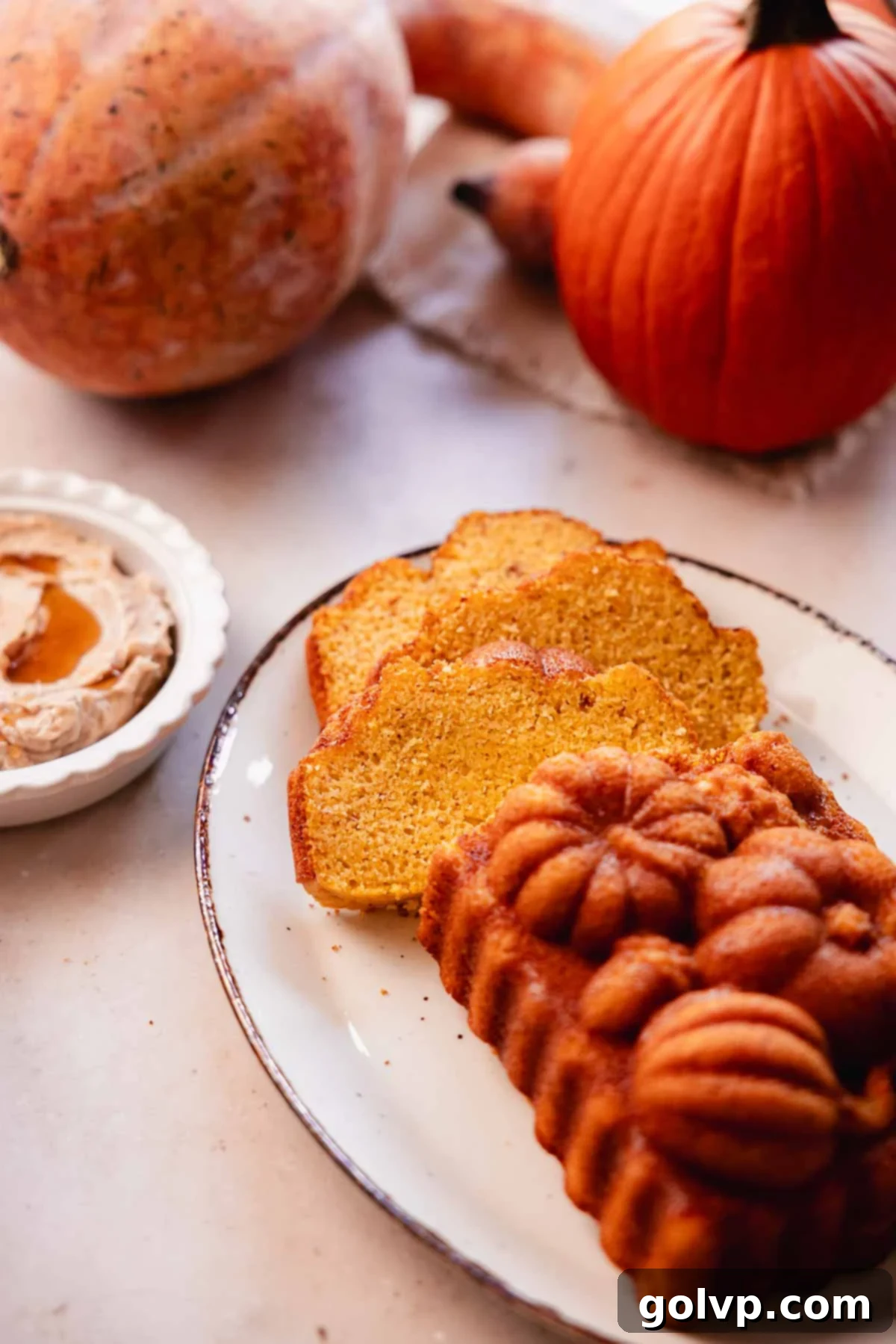The Ultimate Brown Butter Cornbread Loaf with Sweet Cinnamon Honey Butter
Prepare to experience cornbread like never before! This extraordinary brown butter cornbread loaf boasts an irresistible crisp, golden-brown exterior that gives way to an unbelievably soft, plush interior. Each bite delivers a subtly sweet, toasty corn flavor that is profoundly satisfying. But the experience doesn’t end there: it’s served alongside a luscious sweet and salty cinnamon honey butter spread, transforming every slice into the perfect companion for your hearty chili, a delightful snack, or a standout side dish for any meal. This isn’t just a recipe; it’s my cherished, absolute favorite cornbread, a staple at our Thanksgiving table and enjoyed throughout the year.
Baking cornbread in a loaf pan is a true game-changer, elevating the experience by providing more precious surface area. This means more of those coveted crisp edges and, most importantly, ample space to generously slather on that incredible buttery cinnamon spread. If you, like me, appreciate a mildly sweet, classic Southern cornbread over a sugary, dessert-like version, then this recipe is about to become your new obsession. Get ready to discover the magic of homemade brown butter cornbread!
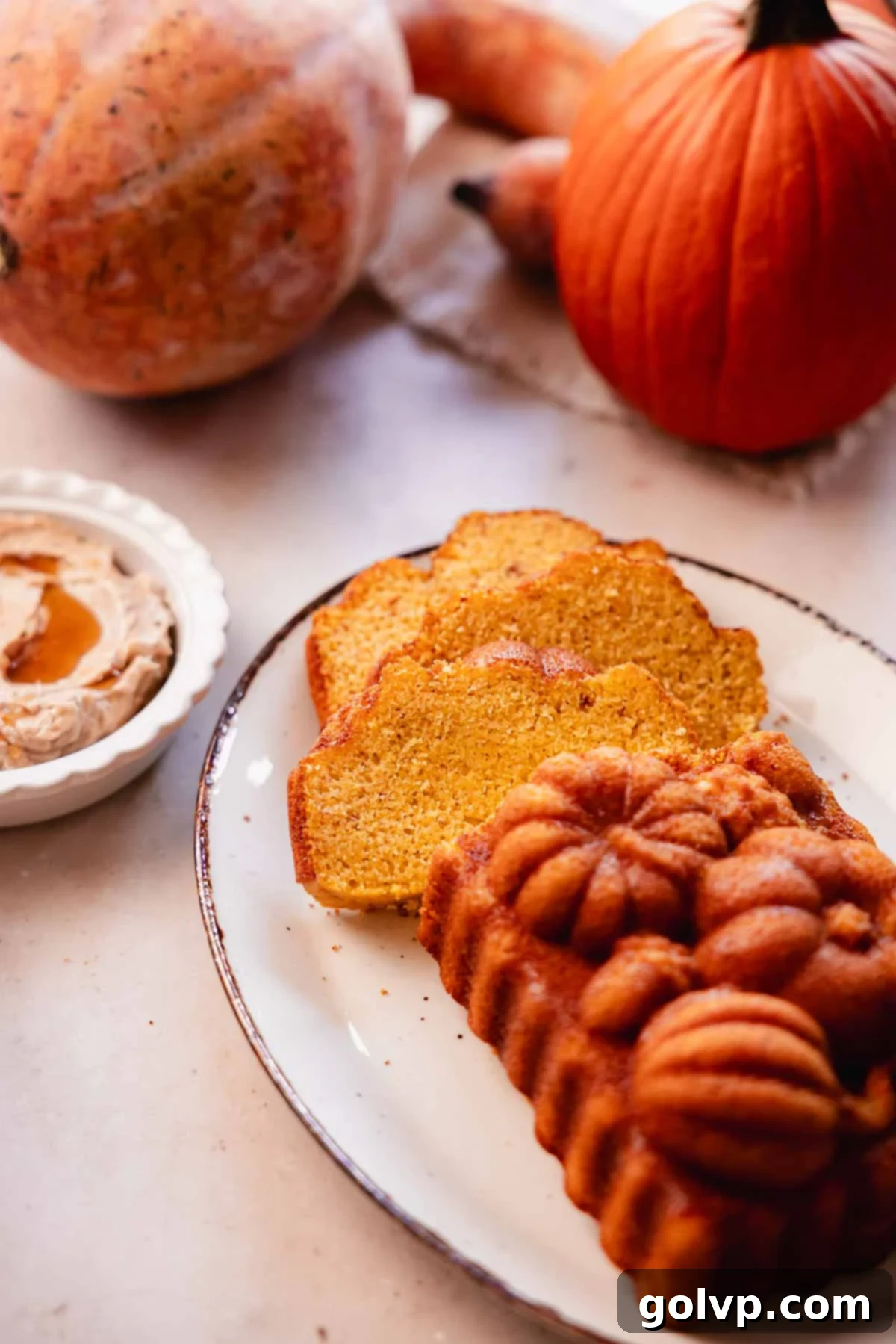
🌽 Why This Brown Butter Cornbread Recipe is a Must-Try
- Rich Brown Butter Flavor: The secret to this cornbread’s depth of flavor lies in browning the butter. This simple step, combined with a touch of milk powder, creates a complex, nutty, and subtly caramelized taste. It’s a game-changer that elevates the traditional cornbread, adding a sophisticated warmth and aroma that’s truly irresistible. Since you’re melting the butter anyway, taking a few extra minutes to brown it is well worth the effort for this unparalleled flavor enhancement. The browned milk solids contribute a unique richness that plain melted butter simply cannot match.
- Baked in a Loaf Pan for Perfect Edges: Opting for a loaf pan isn’t just a preference; it’s a strategic choice for optimal texture. Baking cornbread in a loaf pan yields thinner, more elegant slices, each boasting a higher ratio of crisp, golden-brown edges. This increased surface area is perfect for soaking up the delicious honey cinnamon butter and ensures every bite has that delightful textural contrast of crunchy crust and soft interior. The elongated shape also ensures uniform baking, resulting in consistently perfect slices.
- Irresistible Honey Cinnamon Butter: This recipe isn’t complete without its glorious accompaniment – a whipped honey cinnamon butter spread. This creamy, sweet, and salty butter perfectly complements the toasty corn flavor of the cornbread. The cinnamon adds a comforting warmth, while the honey provides natural sweetness, creating a harmonious balance. It’s so good, you’ll want to put it on everything! For a seasonal twist, especially during fall, you can even pair this cornbread with my pumpkin butter board, offering another fantastic flavor profile.
- Perfectly Balanced Sweetness: If you’re a fan of classic, savory-leaning Southern cornbread, you’ll adore this recipe. I’ve carefully crafted it to be mildly sweet, making it an ideal side dish that enhances your dinner without overwhelming your palate. It strikes the perfect balance, allowing the rich corn and brown butter flavors to truly shine, rather than tasting like a dessert. This makes it versatile enough to be served with savory stews, chili, or even a barbecue spread.
- Moist, Plush Interior with Crisp Edges: This cornbread delivers on all fronts: a tender, moist, and fluffy crumb that contrasts beautifully with those crisp, satisfying edges. The combination of buttermilk and the right amount of fat ensures a consistently tender interior, while the preheated loaf pan guarantees that desirable crunchy crust. Even on the second day, when gently reheated, it maintains its delightful texture, proving its superior quality and ensuring you can enjoy it long after it’s fresh out of the oven.
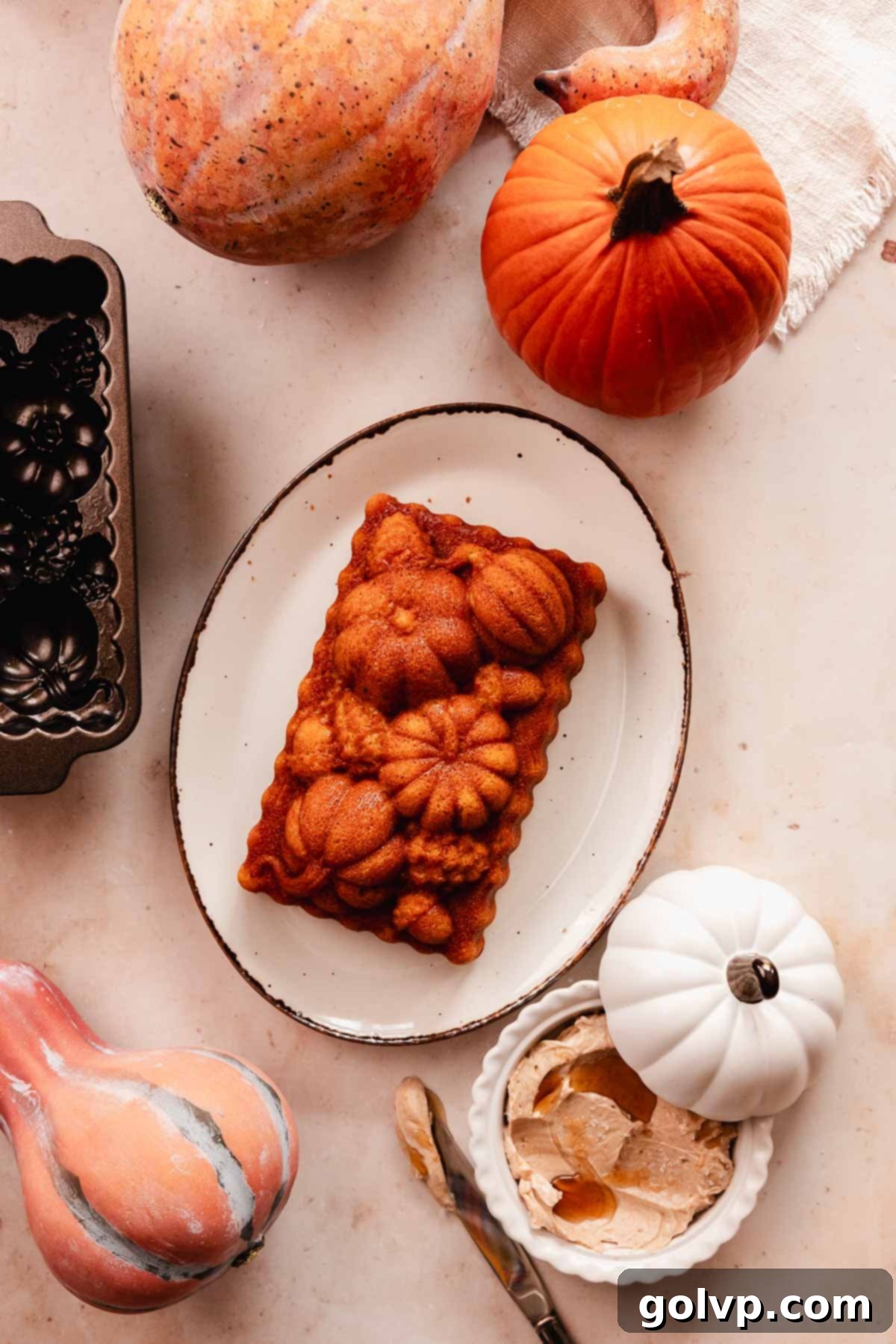
📝 Essential Ingredients for Your Brown Butter Cornbread
Mastering this cornbread comes down to understanding your ingredients. Below are crucial tips for success!
Full steps and precise measurements are in the recipe card below.
Cornmeal: For this recipe, I highly recommend using a medium-ground yellow cornmeal. This type of cornmeal provides that iconic bright yellow hue and the desirable gritty, coarser texture that defines a truly authentic Southern cornbread. The medium grind adds a satisfying chewiness and structure that a finer grind cannot. While fine yellow cornmeal can also be used for a slightly softer crumb, the medium grind truly enhances the rustic character and adds a satisfying bite that many cornbread enthusiasts seek. It contributes significantly to the crisp edges and tender interior of the loaf.
All-Purpose Flour: Accuracy in baking is paramount, especially when it comes to flour. For the most consistent and reliable results, I strongly advise weighing your all-purpose flour using a kitchen scale. Flour is easily compacted, and simply scooping it can lead to significant over-measurement, resulting in a dense or dry cornbread. If a scale isn’t available, ensure you measure correctly by first fluffing up the flour in its bag or container, then gently spooning it into a measuring cup without packing it down. Finally, level off the excess with the flat edge of a knife. This careful measurement ensures the perfect balance of tender crumb and structural integrity.
Buttermilk: A cornerstone ingredient in traditional cornbread, buttermilk is essential for achieving both a beautiful milky flavor and an incredibly moist, fluffy texture. Its acidity reacts with the baking soda, creating air pockets that contribute to the cornbread’s rise and tender crumb. For the best outcome, I strongly recommend using store-bought (cultured) buttermilk, as its consistent acidity and rich flavor are unmatched. Should you find buttermilk hard to come by, kefir makes an excellent substitute, offering a similar texture and acidic profile that helps activate the leavening agents. While a homemade buttermilk substitute (milk + vinegar/lemon juice) can work in a pinch, store-bought buttermilk or kefir will generally yield superior flavor and texture in your final loaf, as they provide a deeper, more consistent tang.
Butter: When browning butter, unsalted butter is the preferred choice as it minimizes the risk of developing an undesirable metallic taste during the browning process. The milk solids in unsalted butter brown more evenly and cleanly, yielding that desired nutty aroma. In this recipe, unsalted butter is used for the cornbread itself to allow precise control over the overall saltiness and highlight the brown butter notes. For the whipped cinnamon honey butter, I opt for salted butter to enhance its flavor and create a delightful sweet-and-salty contrast. If you only have unsalted butter on hand for the spread, simply add a small pinch of extra flaky salt to taste, ensuring the butter spread is perfectly seasoned.
Milk Powder: This might seem like an unusual addition, but skim milk powder is an optional yet highly recommended ingredient that supercharges the brown butter flavor. When browned alongside the butter, the milk solids in the powder intensify that rich, toasty, and caramelized taste through the Maillard reaction. This not only deepens the characteristic nutty flavor of brown butter but also ensures its presence is more pronounced in your cornbread, making the brown butter notes truly pop! It adds an extra layer of depth that will make your cornbread unforgettable and distinctly delicious.
Maple Syrup: My sweetener of choice for this particular cornbread recipe. I specifically use pure maple syrup, not only for its distinct, warm flavor profile but also because it contributes to a cornbread that is delightfully sweet without being overly sugary, maintaining its integrity as a side dish rather than a dessert. Maple syrup offers a more complex, earthy sweetness compared to granulated sugar, enhancing the overall profile of the cornbread. While honey can be used as an alternative, be aware that it will result in a slightly sweeter final product with a different flavor nuance, so adjust to your preference.
Cinnamon: A hint of ground cinnamon is added to the honey butter spread, imparting a wonderfully warm, comforting, and aromatic spice that beautifully complements the sweet and salty notes. This addition elevates the butter from a simple spread to a fragrant, flavorful topping that marries perfectly with the brown butter cornbread. It’s a small touch that makes a significant difference, adding a cozy finish to each buttered slice of cornbread, especially appealing during cooler months.
Honey: Real, raw honey is the star of the butter spread, providing natural sweetness and a complex floral flavor that pairs exquisitely with the cinnamon. Raw honey often carries more nuanced flavors from its nectar source, enriching the spread. While raw honey is preferred for its depth, pasteurized honey will also work perfectly. If you prefer, or if honey isn’t available, maple syrup can be substituted in the butter spread for a slightly different, equally delicious taste, ensuring you can still enjoy this delightful topping.
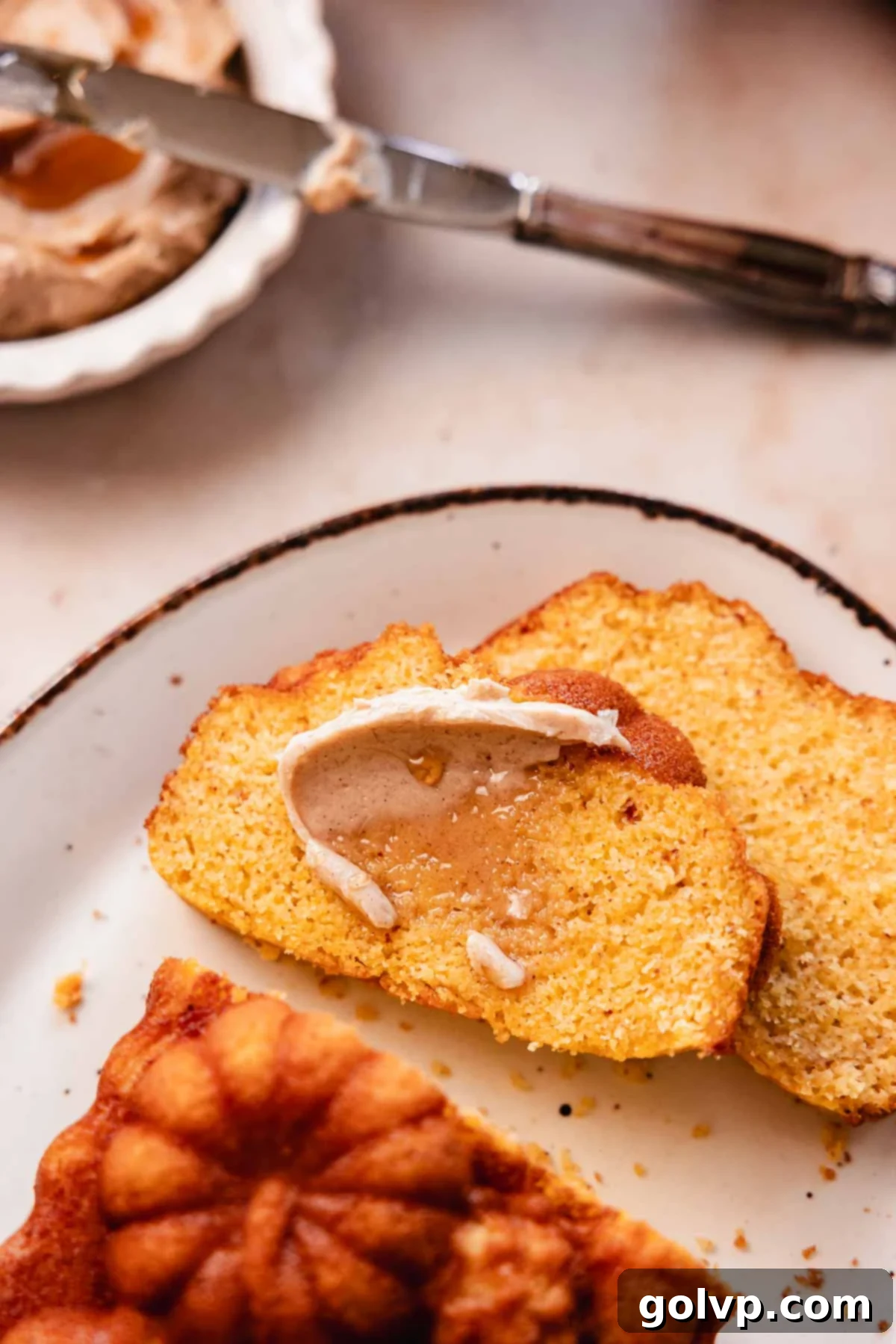
👩🍳 Crafting the Perfect Brown Butter Cornbread Loaf and Cinnamon Honey Butter
Creating this delicious brown butter cornbread is a straightforward process, but each step plays a vital role in achieving its signature flavor and texture. From browning the butter to warming the pan, every detail contributes to the ultimate cornbread experience. Follow these detailed instructions to bake a loaf that will impress everyone at your table.
Cornbread Loaf Step-by-Step Instructions
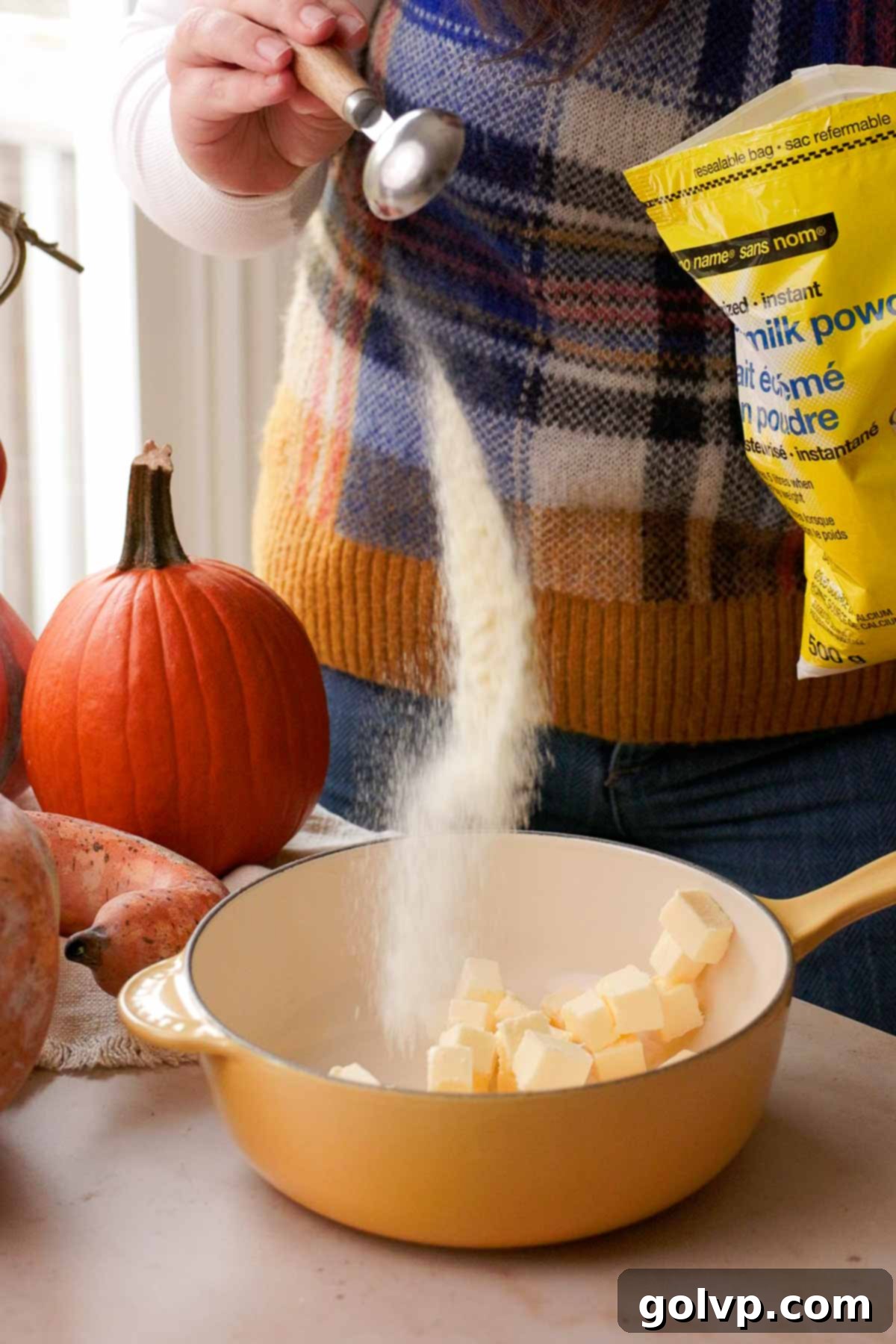
Step 1: Brown the Butter with Milk Powder. In a medium saucepan, combine your measured unsalted butter and milk powder. Place the saucepan over medium heat, allowing the butter to melt and gently bubble. It’s crucial to stir frequently during this stage to prevent the milk solids from burning at the bottom of the pan. Continue cooking until the butter solids begin to turn a rich, amber-brown color, and the mixture develops a fragrant, nutty, and toasty aroma. Once it reaches this beautiful browned stage, immediately remove the saucepan from the heat. Carefully pour the hot brown butter into a separate heat-safe bowl to completely stop the cooking process and prevent it from over-browning. Let it cool slightly for about 10 minutes to ensure it’s not too hot before mixing with other ingredients.
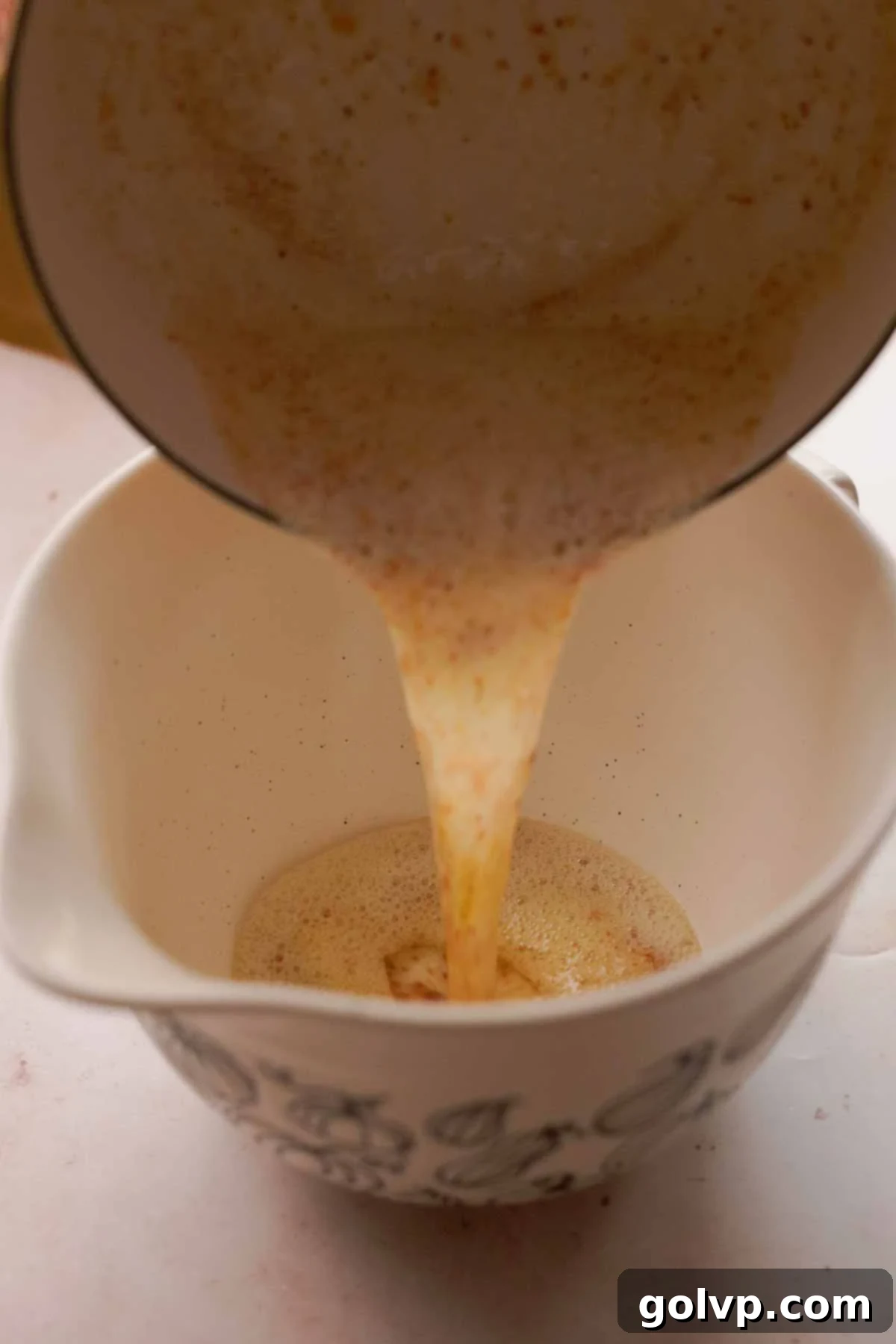
Step 2: Preheat Oven and Pan. While your brown butter is cooling to the appropriate temperature, it’s time to prepare your oven and loaf pan. Preheat your oven to a precise 395°F (200°C). Once the oven has fully reached this temperature, carefully place your empty loaf pan inside. Allowing the pan to preheat thoroughly is a critical step; it ensures an incredibly crisp and golden crust on your cornbread, preventing any sticking and contributing significantly to that delightful crunch on the outside that everyone loves.
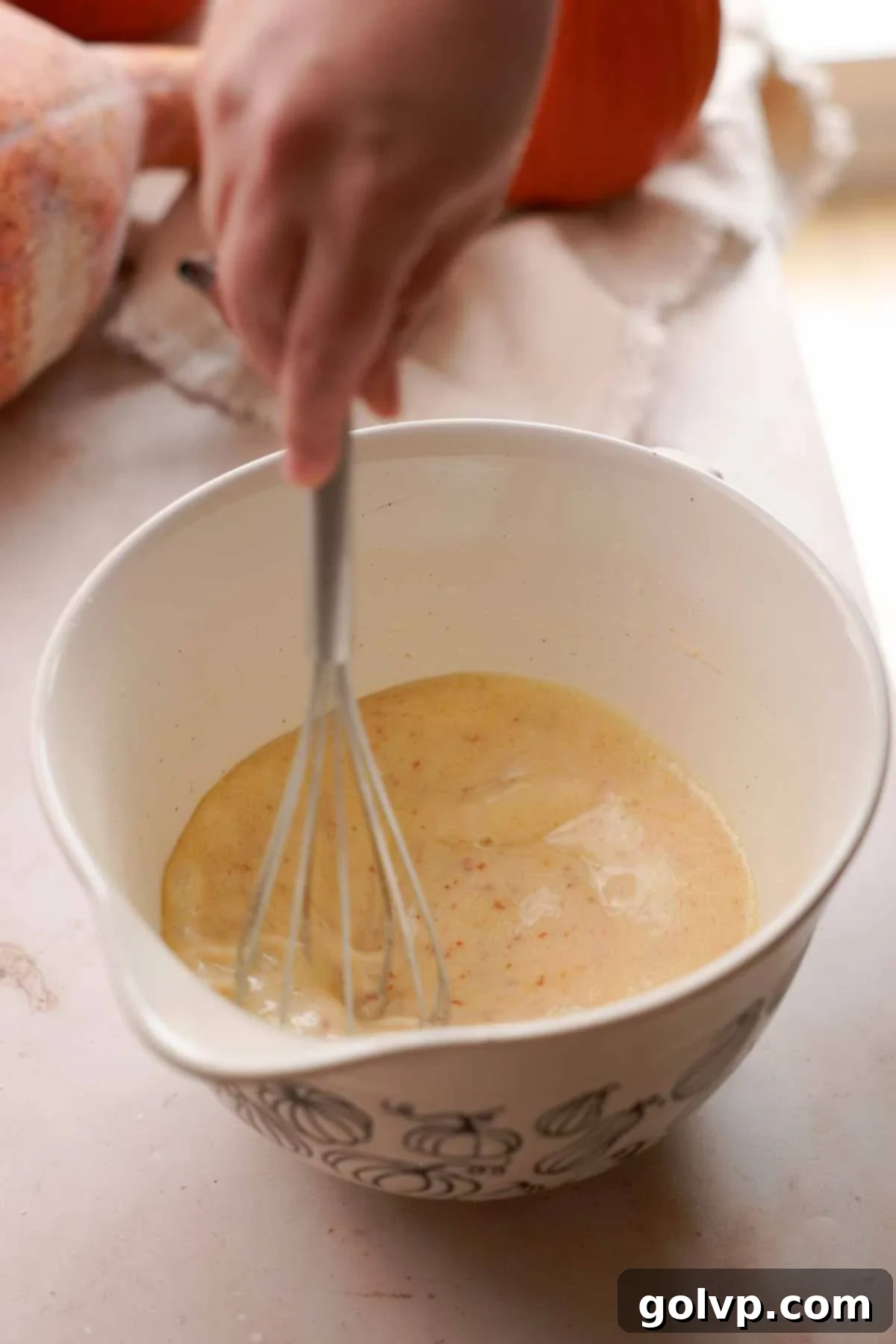
Step 3: Combine Wet Ingredients. Into the slightly cooled brown butter, which should still be liquid but not scalding hot, add the buttermilk, large eggs, pure maple syrup, and sea salt. Using a sturdy whisk, thoroughly combine these ingredients until they are well incorporated and smooth. It’s important to ensure your buttermilk and eggs are at room temperature. This prevents the brown butter from solidifying and creating undesirable lumps in your batter, which can significantly affect the final texture and evenness of your cornbread.
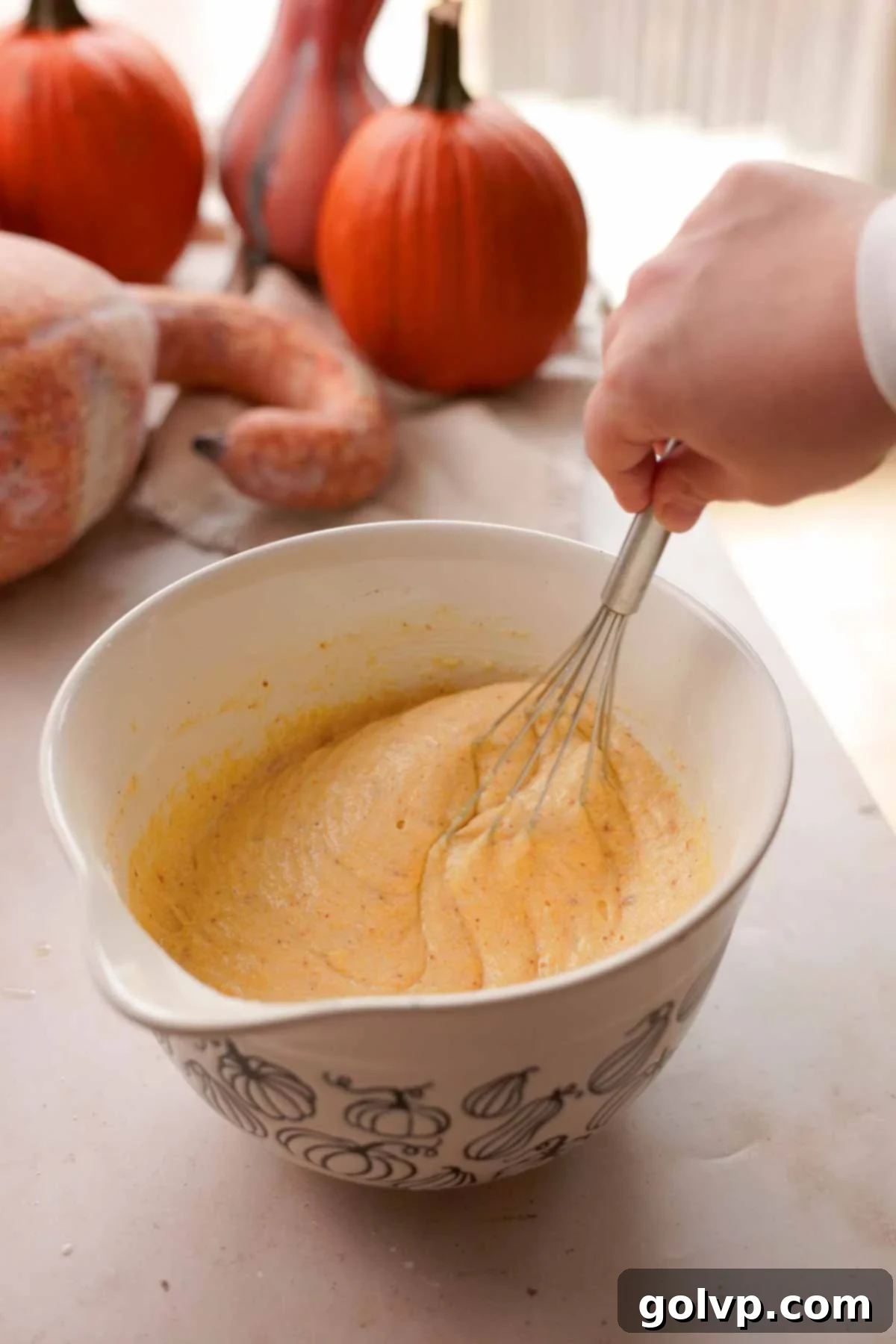
Step 4: Incorporate Dry Ingredients. Now, add all the dry ingredients – the yellow cornmeal, all-purpose flour, baking soda, and baking powder – directly into the same bowl with your prepared wet ingredients. Gently mix everything together with a whisk or a rubber spatula just until a cohesive batter forms. The key here is to avoid overmixing at all costs, as this can overdevelop the gluten in the flour, leading to a tough, dry, and less tender cornbread. A few small lumps in the batter are perfectly normal and often indicate a properly mixed batter, so resist the urge to keep mixing until perfectly smooth.
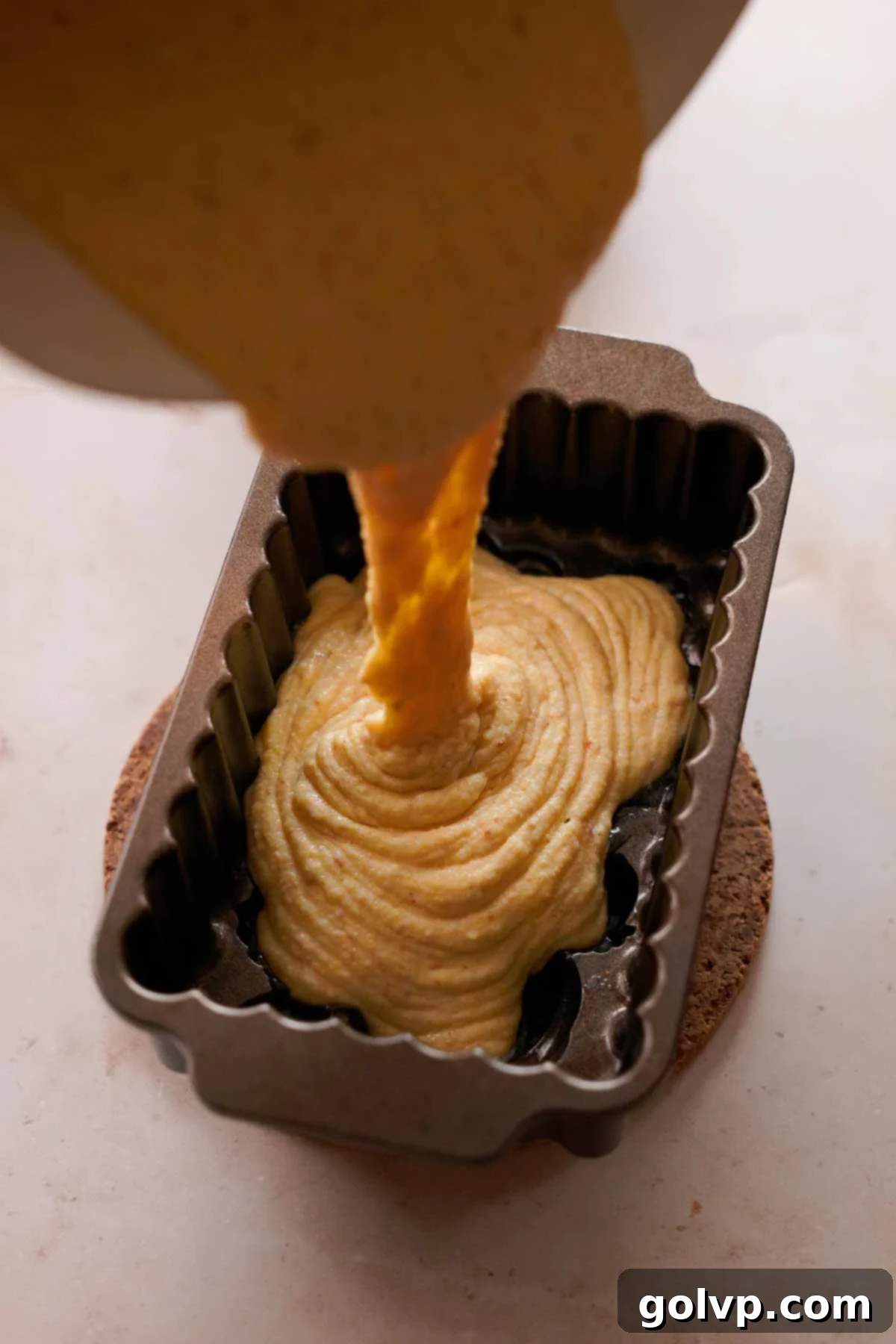
Step 5: Bake the Cornbread. With extreme caution and using reliable oven mitts, carefully remove the piping hot loaf pan from the preheated oven. Add half a tablespoon of butter to the hot pan and let it quickly melt, swirling the pan around vigorously to ensure the butter generously coats all the interior surfaces, including the corners and sides. This step further enhances the crisp crust and acts as an additional non-stick barrier. Immediately pour the prepared cornbread batter into the hot, buttered pan. Bake the cornbread for 28-30 minutes. Begin checking for doneness at 28 minutes by inserting a clean toothpick into the very center of the loaf; it should come out clean or with only a few moist crumbs attached when ready.
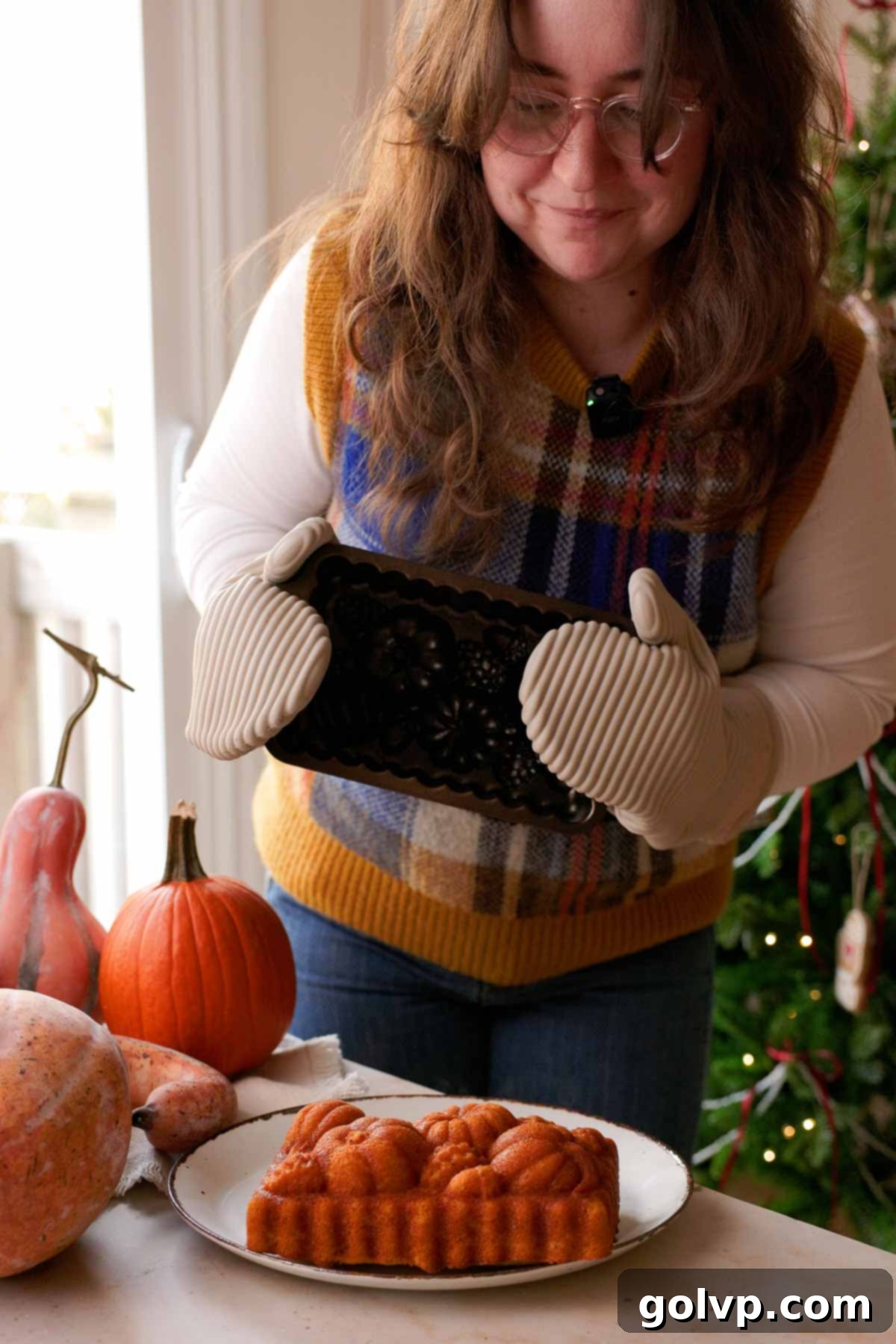
Step 6: Cool and Slice. Once baked, allow the cornbread loaf to cool in the pan for a crucial 5 minutes. This brief resting period helps the loaf to firm up and set, making it easier to handle without crumbling. After 5 minutes, gently flip the loaf over onto a wire rack or a clean serving plate. Let it cool for an additional 10 minutes before slicing. While the cornbread continues to cool, this is the perfect time to prepare your luscious cinnamon honey butter, ensuring both components are fresh, warm, and ready to be enjoyed together for an optimal flavor experience.
Cinnamon Honey Butter Step-by-Step Instructions
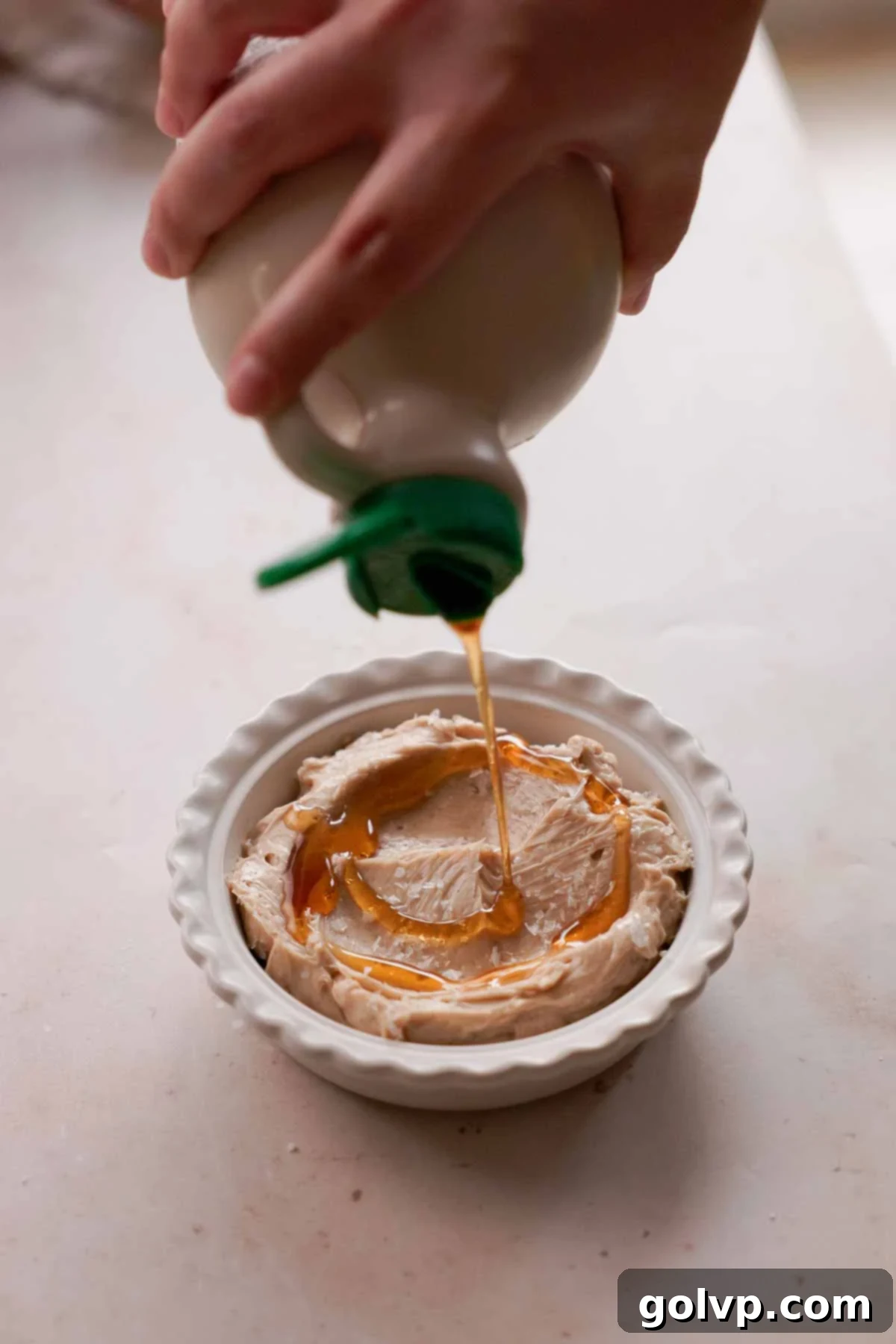
Step 1: Whip the Ingredients. In the bowl of a stand mixer fitted with the paddle attachment, or in a medium bowl using an electric hand mixer, combine the softened salted butter, honey, ground cinnamon, pure vanilla extract, and flaky salt. Begin beating these ingredients together on low speed to incorporate, then increase to medium-high speed. Whip until the mixture becomes wonderfully creamy, light, and visibly smooth. As you whip, taste the butter and adjust the amount of cinnamon, honey, or salt to suit your personal preference for sweetness and seasoning. The goal is a perfectly balanced sweet and savory spread that enhances, rather than overpowers, the cornbread.
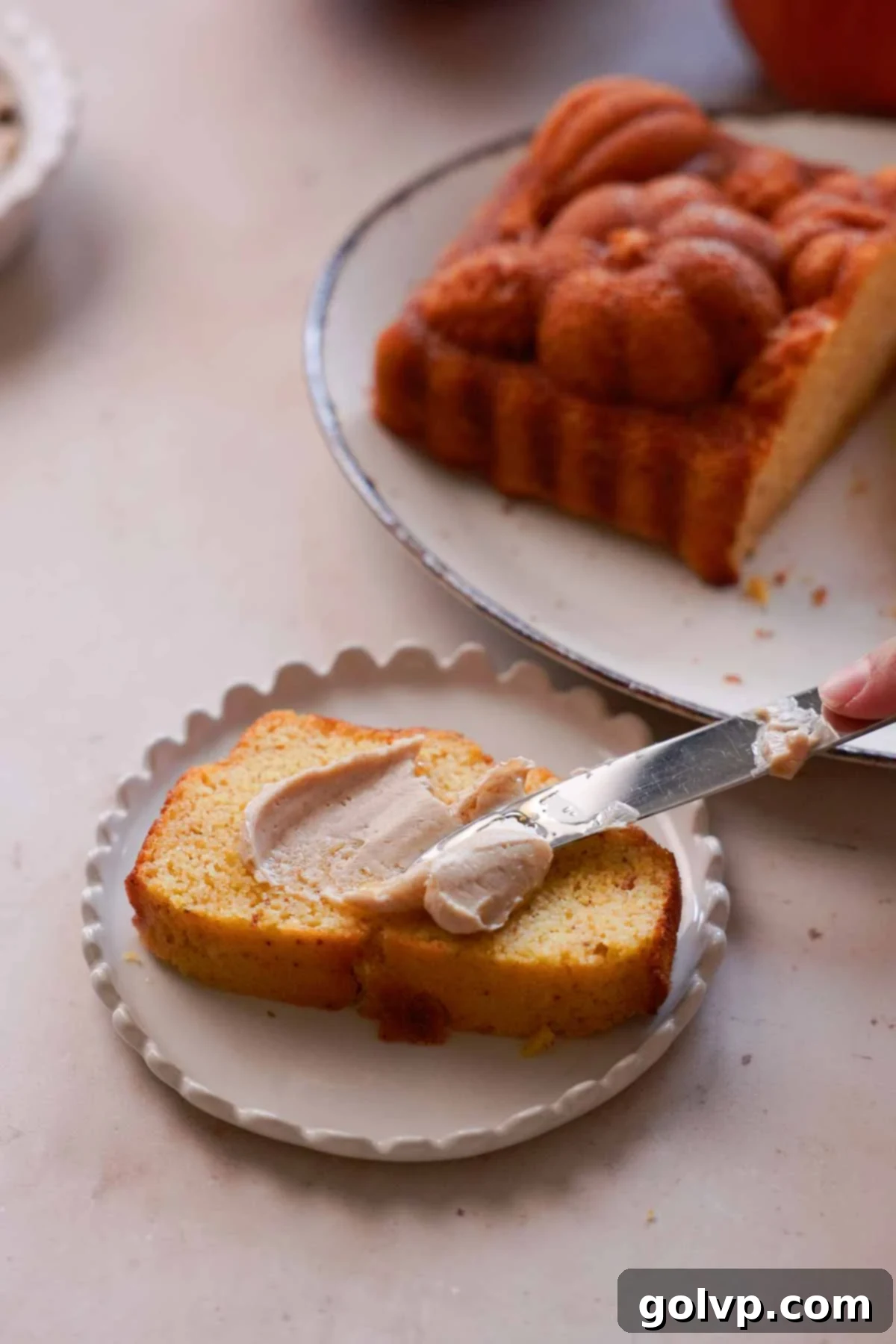
Step 2: Serve with Style. Once your cinnamon honey butter is perfectly whipped, transfer it into a small, attractive serving plate or bowl. For an extra touch of elegance and heightened flavor, consider sprinkling a bit more flaky salt on top and drizzling with a little extra maple syrup, if desired. Serve this decadent butter alongside warm, freshly sliced pieces of your brown butter cornbread. Encourage everyone to spread as much as they like – it’s the ideal finishing touch that elevates every bite, creating a truly memorable culinary experience.
✔️ Expert Tips for the Best Brown Butter Cornbread Loaf
- Prioritize Quality Buttermilk or Kefir: For unparalleled flavor and a truly moist, tender crumb in your cornbread, always opt for store-bought cultured buttermilk or kefir. These fermented dairy products provide consistent acidity and a rich milky taste that homemade substitutes (like milk acidified with vinegar or lemon juice) simply can’t replicate as effectively. Their consistent pH ensures proper leavening, resulting in a superior texture and ensuring your cornbread has the best possible flavor and rise.
- Choose Medium Yellow Cornmeal for Authentic Texture: To achieve that signature, rustic gritty texture and beautiful bright yellow color characteristic of traditional Southern cornbread, medium-ground yellow cornmeal is your best friend. While fine cornmeal will produce a softer, more cake-like loaf, the medium grind truly delivers the authentic experience with a satisfying bite and a more pronounced corn flavor that holds up beautifully, especially in a loaf format. This choice contributes significantly to the overall enjoyment of the cornbread.
- Ensure Wet Ingredients are at Room Temperature: This is a critical step often overlooked in baking that can make a huge difference. Cold wet ingredients, particularly buttermilk and eggs, will cause the rich brown butter to firm up and solidify when mixed, leading to a lumpy batter. A lumpy batter prevents even distribution of ingredients, can hinder proper gluten development, and ultimately results in unevenly baked cornbread with an inconsistent texture. Always let your dairy and eggs come to room temperature before combining them with the butter to ensure a smooth, homogeneous batter.
- Avoid Overbaking for a Moist Result: Cornbread can quickly go from perfectly baked to dry, crumbly, and unappealing if left in the oven for even a few minutes too long. As soon as a clean toothpick inserted into the very center of the loaf comes out clean or with only a few moist crumbs attached (not wet batter), remove it from the oven immediately. Trust your toothpick test; it’s the most reliable indicator of doneness and the key to preserving that delightful moist and tender interior that makes this cornbread so exceptional.
🥄 Make Ahead and Storage Tips
While this brown butter cornbread is absolutely divine when eaten fresh out of the oven, with its edges at their crispiest and its crumb at its softest, it’s also incredibly forgiving. You can certainly bake this loaf a day in advance, which is a huge convenience when you’re hosting a special gathering like Thanksgiving, a holiday meal, or a casual dinner party and want to manage your time effectively. When you’re ready to serve, a gentle reheat in a preheated oven will bring it back to life, restoring its crispy edges and ensuring the center is wonderfully hot and soft, tasting almost as good as freshly baked.
To keep your cornbread fresh and prevent it from drying out, ensure it cools completely before storing. Once cooled, store it in an airtight container or a sealed plastic bag at room temperature for up to 2-3 days. For longer storage, you can wrap individual slices or the whole loaf tightly in plastic wrap, then an additional layer of aluminum foil, and freeze for up to 3 months. To enjoy from frozen, thaw at room temperature overnight or gently reheat from frozen in the oven. Reheating it will always help those edges crisp up again, bringing back that delightful freshly baked sensation, making it a perfect make-ahead option.
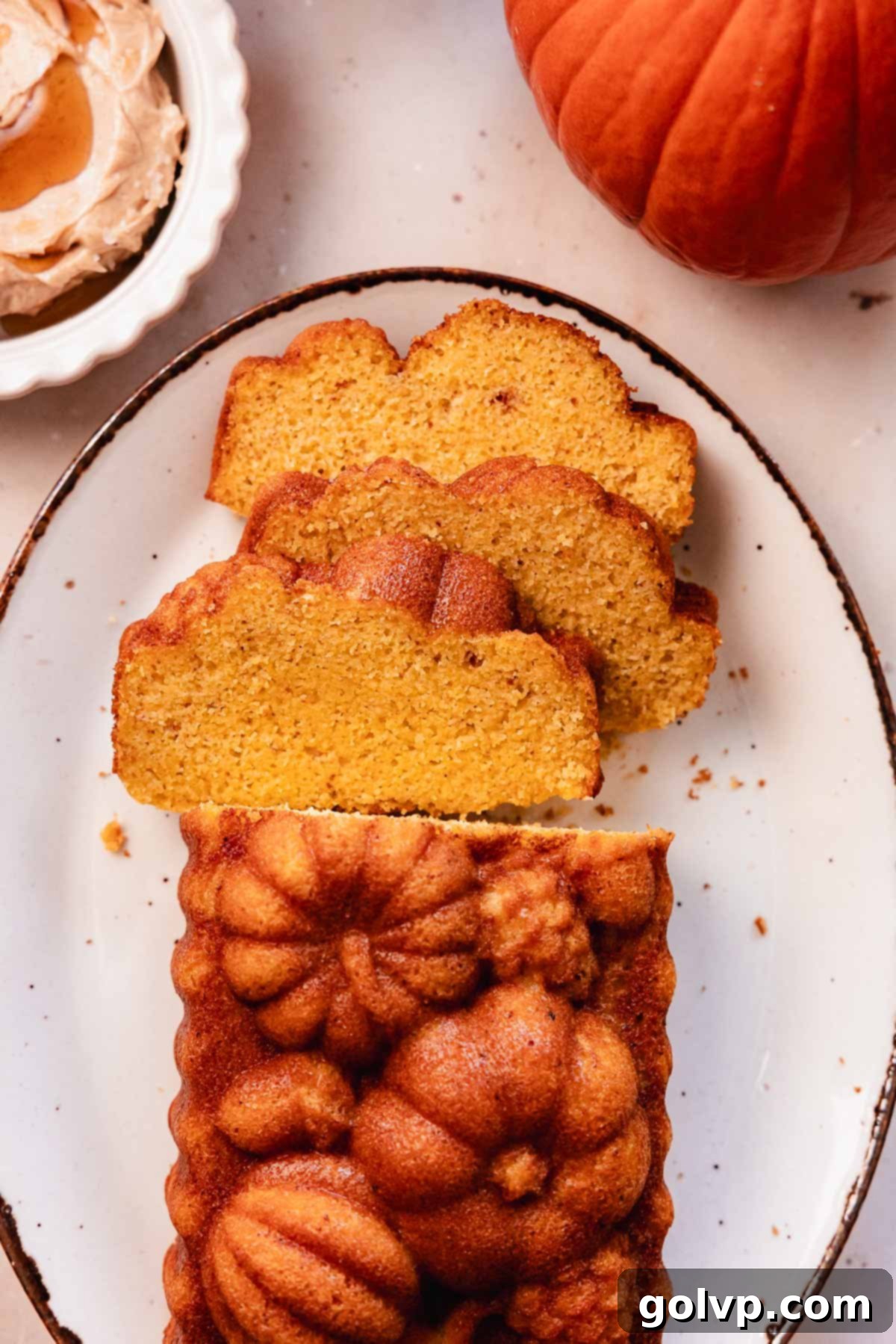
📖 Common Questions About This Cornbread Recipe
Absolutely, you can. While browning the butter is a simple step that significantly enhances the cornbread’s flavor with its unique nutty and toasty notes, it’s not strictly mandatory. If you’re short on time or prefer a more classic butter flavor, you can simply melt the butter and use it as directed in the recipe. The cornbread will still be delicious and moist, but you’ll miss out on the rich, complex depth and aroma that the Maillard reaction in brown butter provides. It’s a flavor enhancer, not a structural necessity.
I personally used a Nordic Ware harvest loaf pan for the beautiful fall-themed design, which I also used for my pumpkin and chocolate bread. However, any standard 9×5 inch loaf pan, preferably non-stick or well-greased, will work perfectly for this recipe. A quality non-stick pan is always a good choice to ensure easy release and a flawless, crispy crust, especially after the preheating step. Metal pans tend to yield crisper crusts than ceramic or glass.
When it comes to cornbread, yellow cornmeal is the most traditional and commonly used variety, lending a vibrant color and classic flavor. For that classic, hearty, and slightly gritty texture that truly defines Southern-style cornbread, a medium-ground cornmeal is highly recommended. The coarser particles provide a satisfying bite and contribute to the crisp exterior. If you prefer a lighter, more tender, and finer crumb that’s closer to cake, then a fine-ground cornmeal would be more suitable. However, for this specific brown butter cornbread loaf recipe, I lean towards the medium grind to achieve a robust texture that holds up beautifully and provides that satisfying bite with crisp edges.
While this recipe is written for all-purpose flour, you can certainly experiment with gluten-free baking to accommodate dietary needs. To make it gluten-free, you would need to substitute the all-purpose flour with a high-quality 1:1 gluten-free baking flour blend that preferably contains xanthan gum (which helps with structure). Additionally, ensure your cornmeal is also certified gluten-free, as some brands may have cross-contamination. Please note that the texture might vary slightly from the original recipe, potentially being a bit more delicate, but it can still yield a delicious and enjoyable loaf.
This versatile cornbread is a fantastic accompaniment to a wide array of dishes, making it perfect for almost any meal. It’s truly exceptional with hearty, warming dishes like stews, chili, or any comforting soup, soaking up the delicious broths. It also makes a wonderful side for barbecued meats, roasted chicken, pulled pork, or fried fish. For breakfast or brunch, enjoy it with a generous smear of extra honey butter, a drizzle of maple syrup, and a steaming cup of coffee. Its mild sweetness and savory undertones make it adaptable to both savory main courses and a delightful standalone snack.
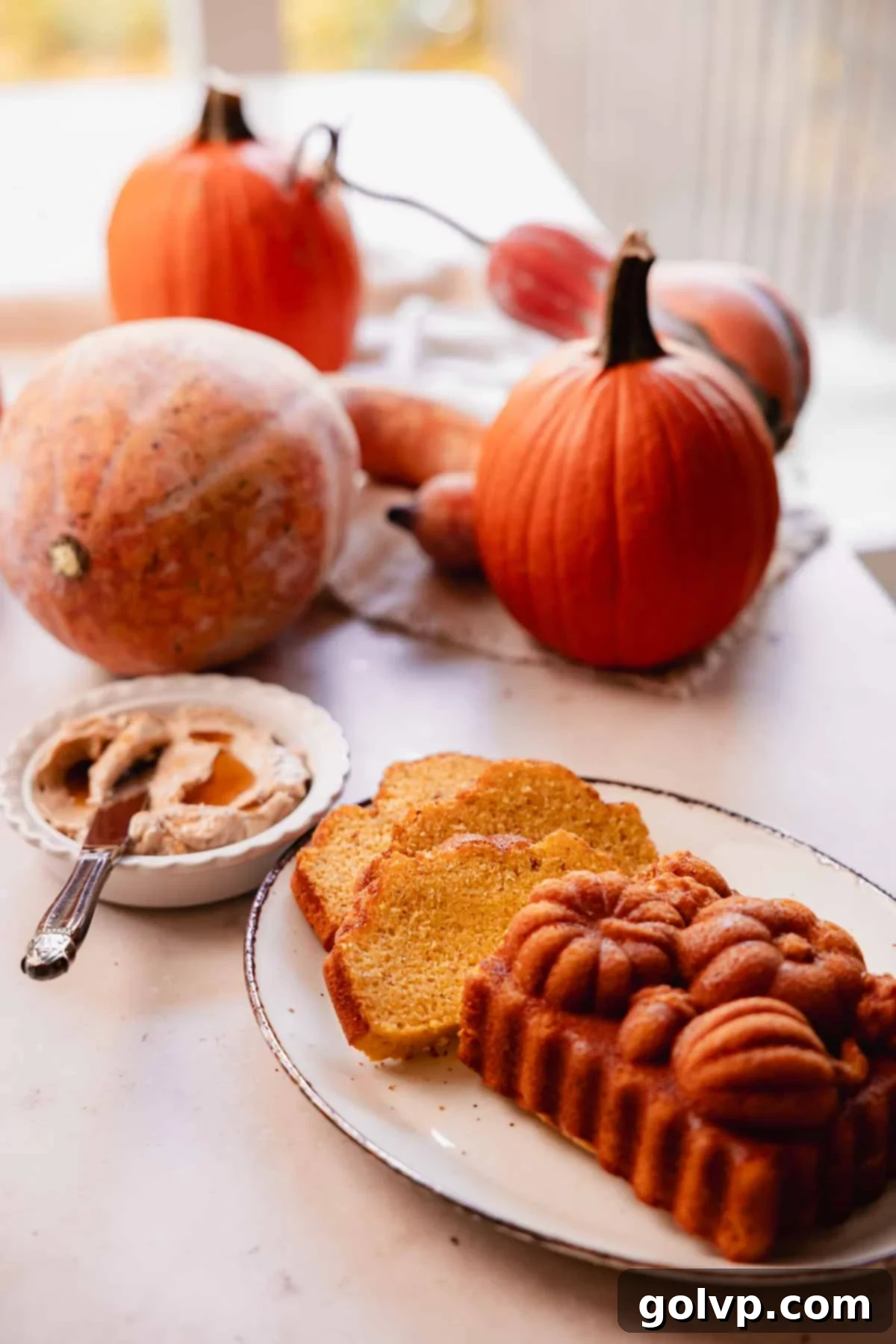
🍞 More Delicious Recipes You’ll Love
- Pumpkin and Chocolate Bread
- Pumpkin Spice Butter Board
- No-Knead Cheese and Bacon Rolls
- Cinnamon Swirl Bundt Cake
Did you try this mouthwatering recipe? I would absolutely love for you to rate it and share your thoughts in the comments below! Don’t forget to share your delicious creation on Instagram and tag @flouringkitchen. For more inspiring recipe ideas and to save your favorites, be sure to follow me on Pinterest.
📖 Recipe Card
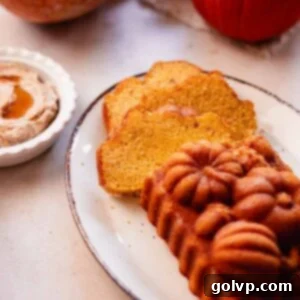
Brown Butter Cornbread with Cinnamon Honey Butter
MaryEquipment
- nine inch by five inch loaf pan non-stick pan
Ingredients
Brown butter cornbread loaf
- ½ cup unsalted butter
- 1 tablespoon milk powder optional, but recommended
- 1 ½ cup buttermilk room temperature
- 2 large eggs room temperature
- ¼ cup maple syrup
- ½ teaspoon sea salt
- 1 cup yellow cornmeal medium
- 1 cup all purpose flour
- ½ teaspoon baking soda
- 2 teaspoons baking powder
- ½ tablespoon butter for greasing pan
Cinnamon honey butter
- ½ cup salted butter softened
- 2 tablespoons honey
- 1 teaspoon ground cinnamon
- ½ teaspoon pure vanilla extract
- ¼ teaspoon flaky salt add more to taste if using unsalted butter
- 1 tablespoon maple syrup for drizzling on top, optional
Instructions
Brown butter cornbread loaf
- Combine butter and milk powder in a saucepan and melt on medium heat. Cook as it bubbles, stirring frequently to prevent it from burning. When it starts to foam on top and the white bits turn a brown color, remove it from heat and immediately, carefully pour it into a heat safe bowl to cool slightly for 10 minutes.½ cup unsalted butter, 1 tablespoon milk powder
- While the brown butter cools, preheat the oven to 395°F (200°C). Once preheated, pop the loaf pan into the oven to let it heat up.
- Add buttermilk, eggs, maple syrup, and salt into the brown butter. Whisk to combine.1 ½ cup buttermilk, 2 large eggs, ¼ cup maple syrup, ½ teaspoon sea salt
- Then, add cornmeal, flour, baking soda, and baking powder right into the same bowl. Mix it together with a whisk just until it forms a batter1 cup yellow cornmeal, 1 cup all purpose flour, ½ teaspoon baking soda, 2 teaspoons baking powder
- Carefully remove the hot pan out of the oven. Add half a tablespoon of butter and let it melt. Swirl the pan around so that the butter gets into all the nooks and crannies. Pour the cornbread batter into the pan and bake it for 28-30 minutes – checking if a toothpick comes out clean at 28 minutes.½ tablespoon butter
- Let the loaf cool for 5 minutes before flipping it over onto a plate. Let it cool for another 10 minutes before slicing – I make the cinnamon honey butter while it cools.
Cinnamon honey butter
- Combine the softened butter, honey, cinnamon, vanilla extract, and flaky salt in a stand mixer or a medium bowl. Whip it all together with an electric mixer until it’s creamy and smooth. Make sure to taste it and add more cinnamon, honey, or salt if desired.½ cup salted butter, 2 tablespoons honey, 1 teaspoon ground cinnamon, ¼ teaspoon flaky salt, ½ teaspoon pure vanilla extract
- Transfer the butter into a serving plate or bowl and sprinkle more flaky salt and drizzle with maple syrup.1 tablespoon maple syrup
Notes
- Use store-bought buttermilk or kefir for the best texture and flavor.
- Use medium yellow cornmeal for that signature gritty texture and bright yellow color.
- Have your wet ingredients at room temperature. Cold wet ingredients will make the butter solidify resulting in a lumpy batter and uneven cornbread.
- Remove it from the oven as soon as a toothpick comes out clean to prevent a dry, crumbly cornbread.
